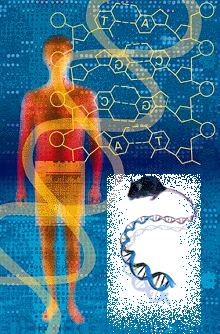[“Highly accessed research article” on BMC Genomics.]
High-throughput analysis of gene expression offers a powerful means of studying how genes work and of uncovering the secrets encoded in genome sequences. Differential gene expression, which plays a key role in various cellular processes, can be quantified by analyzing a large number of transcription products. To do so, several large-scale transcript detection technologies have been developed, chief among which are variants of microarray technology, expressed sequence tags (ESTs), and serial analysis of gene expression (SAGE). Although each of these has its own limitations, combined with bioinformatics and statistical analysis, they have been successful in revealing genes expressed differentially in different tissues or in different physiological or phenotypical states and in yielding unprecedented insights into the complicated interactions of expressed genes and their cellular functions
To deal with the issue of tissue source, in this work, we carefully screened and organized more than 8 million human and mouse ESTs into 157 human and 108 mouse tissue/organ categories, to which we applied an established statistic test using different thresholds of the p value to identify genes differentially expressed in different tissues. Further analysis of the tissue distribution and level of expression of human and mouse orthologous genes showed that tissue-specific orthologs tended to have more similar expression patterns than those lacking significant tissue specificity. On the other hand, a number of orthologs were found to have significant disparity in their expression profiles, hinting at novel functions, divergent regulation, or new ortholog relationships.
Comprehensive statistics on the tissue-specific expression of human and mouse genes were obtained in this large-scale, EST-based analysis. These statistical results have been organized into a database, freely accessible at a user friendly website, for easy searching of human and mouse tissue-specific genes and for investigating gene expression profiles in the context of comparative genomics. Comparative analysis showed that, although highly tissue-specific genes tend to exhibit similar expression profiles in human and mouse, there are significant exceptions, indicating that orthologous genes, while sharing basic genomic properties, could result in distinct phenotypes.
Access full paper at:
Pao, S.Y., Lin,W.L., and Hwang, M.J. (2006) “In Silico Identification and Comparative Analysis of Differentially Expressed Genes in Human and Mouse Tissues.” BMC Genomics 7:86


